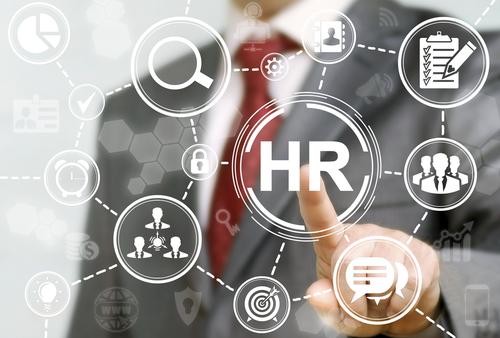HR leaders are facing a new type of workplace: a hybrid environment where employees work both in the office and remotely. This forces HR leaders to adapt to maintain cohesive teams. It’s not always clear how to deal with this changing landscape, leaving many leaders frustrated because all technology seems to do is make their jobs more difficult.
This article explores what challenges come with hybrid workspaces, how HR leaders can find the support they need, and why digitization might be the best tool to help them navigate their new responsibilities.
How Hybrid Work Challenges HR Leaders
As hybrid teams increase, HR leaders face many new issues. Besides the fact that policies, benefits, and business procedures must change to adapt to remote workers, other major adjustments must also be made.
The first problem is managing work schedules and employee productivity. In a hybrid environment, a team can be located worldwide and in different time zones. HR leaders must balance employee availability, different working preferences, and the company’s needs for a successful outcome.
A team must also be a strong unit with adequate resources and support to do its work. In this sense, HR leaders are responsible for maintaining staff cohesion, providing those resources, and ensuring effective communication channels are in place.
Leadership remains the biggest hurdle. In-office workers can still see and interact with managers directly, but remote employees often experience a lack of guidance and leadership. Leaders who aren’t as versed in technology or don’t have the right tools and systems in place can exacerbate the problem.
It’s no wonder hybrid environments can cause HR leaders to feel a sense of disconnection. This is especially true in areas that affect their day-to-day responsibilities, such as remote communication and relationship-building, employee morale and engagement, silo-free collaboration, training, performance management, and company culture and values.
HR leaders can address these disconnections by leveraging different communication and collaboration technology solutions. Fostering a sense of belonging and openness can also help employee engagement via virtual teambuilding exercises, regular check-ins, and structured feedback.
How the Changing Role of HR Impacts the Support Leaders Need
In a hybrid work environment, there are seven main areas where HR leaders must evolve to meet expectations:
1. Adaptability: HR leaders must be flexible to accommodate remote and in-office workers. They must deal with issues that arise from both environments, and this requires a deep understanding of work policies, communication strategies, and the right technology tools.
2. Technology skills: HR leaders must stay up to date with the latest platforms and tools to provide support to remote workers.
3. Employee communication: HR leaders are expected to promote critical communication methods between hybrid locations that are clear and transparent and encourage cohesive team cultures.
4. Positive employee experience and well-being: HR managers must focus on providing mental health support to remote workers by prioritizing work/life balance, wellness programs, and flexible working schedules.
5. Performance management: Performance management strategies, metrics, goals, and feedback need to be clear and supportive of the unique circumstances remote workers face.
6. Legal compliance: To avoid risks, HR leaders must stay current with labor laws, employment policies, and data protection regulations that apply to the hybrid working environment.
7. Leadership support: Finally, they are expected to support their own managers and leaders.
Speaking of support, HR leaders also need assistance to meet these expectations and ensure employee well-being. They need access to better communication skills, ongoing professional training in managing hybrid staff, sufficient technology tools, and resources and expertise related to remote work.
Infrastructure and best practices for remote collaboration must also be in place—not only between different teams but also in the form of HR managers’ receiving regular communication and updates from other leaders about the organization’s strategies, plans, and changes that affect employees.
4 Ways Digitization Supports HR Leaders and Connects Them to Their Teams
Contrary to what many HR leaders might fear, digitization isn’t merely something that threatens to divide the workforce and make their management strategies more difficult.
The right digital tools can make a team more productive and a company more successful. Specifically, HR leaders can use technology to streamline their responsibilities in hybrid environments, find the support they need, and connect with employees.
Here are four ways digitization can support the day-to-day activities of HR leaders:
- Better communication: Digital communication tools provide seamless collaboration and communication among everyone. HR leaders can leverage such platforms to create internal communication strategies that focus on connecting with employees, offering training and guidance, answering questions, and dealing with any concerns in a timely manner.
- A single source of truth: When digital information is centralized, it’s more accessible and manageable for HR leaders. With the right platform, leaders can quickly update employee records, track performance and attendance, pay workers, and enjoy holistic views of their entire workforces and projects. This enables HR leaders to make informed decisions and better support their teams.
- Self-service for employees: Digital tools enable workers to do things that can lighten the load for HR leaders. For example, employees can manage their own HR information, update personal information, submit leave requests, and access virtual payment portals. With reduced administrative burdens, HR leaders have more time to focus on initiatives and employee needs.
- Data for better decision-making: Data analytics enable HR leaders to analyze turnover rates, performance metrics, and engagement surveys. They also help identify trends and opportunities for improvement, provide employee support, discover more employee engagement solutions, and make solid data-driven decisions.
There’s no reason to fear a world that’s becoming increasingly digitized. With the right tools, HR leaders can experience swift communication, gain valuable insights, streamline processes, have great day-to-day support, and foster close-knit hybrid communities.
Kerryn-Leigh Anderson is the head of change and commerce of Wyzetalk, a digital employee experience platform that enables communication and improves engagement for frontline and nondesk workers. She’s been with Wyzetalk since its inception.

